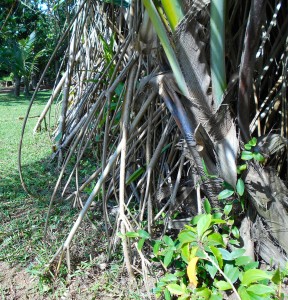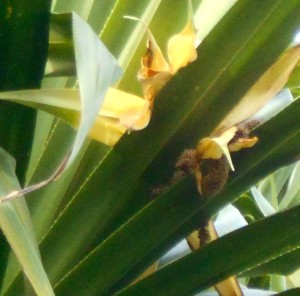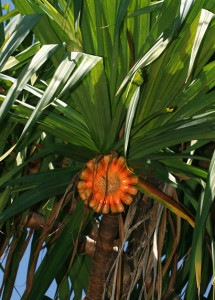SRI LANKA ROUNDABOUT (Number 13) – The Tree That Walks
by · Published · Updated
A weekly look at Sri Lanka for Jetwing by Royston Ellis
Welcome to Jetwingers around the world to this week’s issue of my regular Jetwing newsletter about Sri Lanka
Not only does Sri Lanka have fascinating fauna like pangolins and dugongs, the country also has some incredible flora, such as plants that eat insects and trees that walk. You’ll see clumps of the latter along the west coast and in unkempt gardens, like mine.
In Common Wayside Tress of Sri Lanka, a publication of the Royal Botanical Gardens at Peradeniya, the plant is identified as the Pandanus odoratissimus, known in Sinhala as Muhudukeiya and in English as Screw Pine.
It is indigenous to Sri Lanka where it grows in the wetlands and dry and intermediate lowlands; it is a natural defence against sea/soil erosion because it’s always putting down roots.
But does it actually walk? A professor who has studied its South American cousin (Socratea exhorrihica) which seems to advance from its shade in the Amazon jungle to sunnier glades, has debunked the whole idea. He maintains the tree’s central root remains where it is, while shoots fan out. In my garden it’s easy to see that in Sri Lanka, these trees do walk.
Of course, I can’t actually see them move. They are more like creepers creeping across the lawn instead of climbing upwards. They advance so slowly, their movement is imperceptible on a daily basis. But when I look at one of those trees after a few months, it’s clear it has taken over another patch of my garden.
The walking Tree of Sri Lanka is not like the famous walking tree of the Kaibab Trail in the Grand Canyon National Park of Arizona, USA. The roots of that tree resemble a giant’s fingers crawling across a tablecloth of desert. Sri Lanka’s walking trees advance by sending down shoots sprouting from an established trunk. These are like spindly legs gradually reaching down to earth. Once there, they embed themselves, and the plant has succeeded in “walking” another foot or so.
Curry component
Also of the same family – Pandanaceae – is the Pandanus odoratissimus forma variegates. Known in Sinhala as Wetakeiya and in Tamil as Thalai, this has long, light leaves bordered with lighter green/yellow stripes, making it an attractive ornamental plant. Another variety, whose leaves are used to make mats, is Pandanus kaida. The walking tree’s flower is like a yellow leaf and is often collected by Sri Lankans to use as a religious offering. Its fruit is a gorgeous crimson and gold in colour, a knobbly round ball that makes a talking-point table-top decoration.
As if walking isn’t enough activity for the tree, it also contributes to the flavour of many Sri Lankan dishes. That’s when rampe (a piece of the dried pandan leaf) is added to a curry to jazz it up. I’m wondering how long it will take my tame walking trees to cross the lawn and deliver their leaves directly to the kitchen?
Royston Ellis (www.roystonellis.com) is a British author resident in Sri Lanka since 1980.







